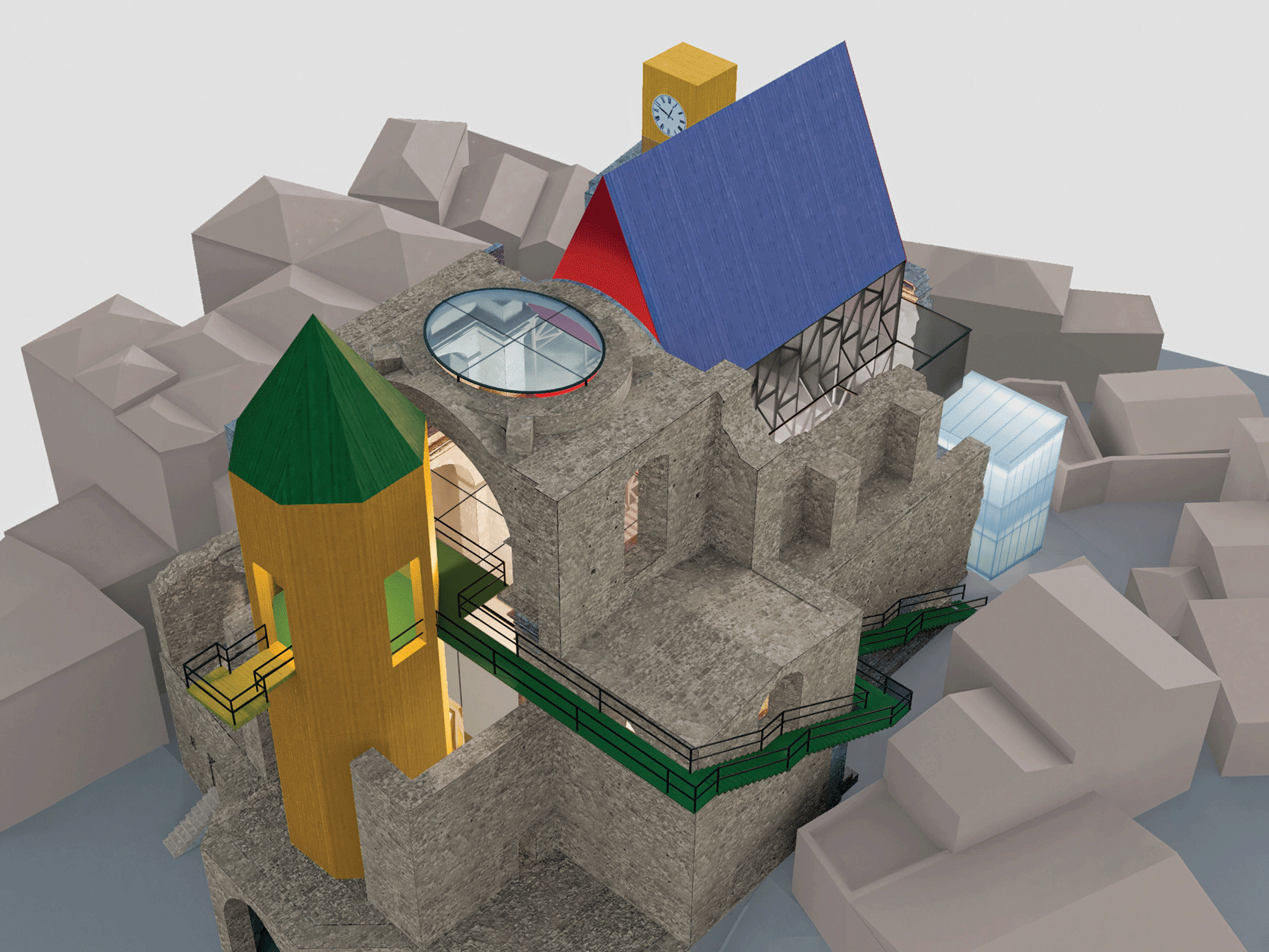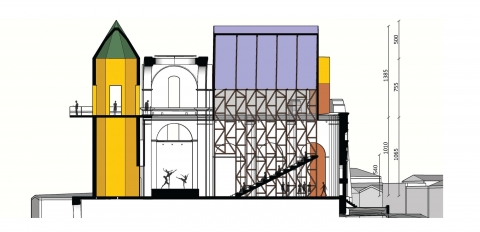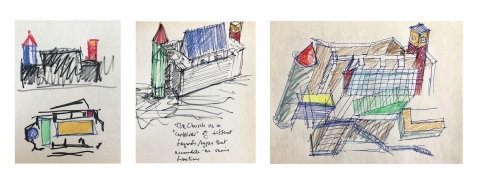Fallen Church
La Chiesa della contemplazione e della cultura
The ruins of the old church stand like silent sentinels over the valley, witnesses to past and present events. This situation prompted us to take a decision to leave these ruins as such, without tampering with them. The thick masonry walls are thus left as a physical envelope, an “as found” object, while the new functions of theater, backstage, exhibition space, and accessory functions all take their place within these walls, as autonomous objects that enter into a dialectical dialogue with the existing fabric. In order to accentuate this distinction, we also propose to build these new elements of an entirely different material, of wood, which takes the form of a temporary construction that can be modified with time. In homage to Aldo Rossi, these inserts and additions also take the form of archetypal landmarks, monuments of the present that serve to anchor the new building in its context, and to give it a certain historical legitimacy. The Church is thus transformed into a container of typological elements: the theater stage capped by a traditional pitched roof, the watchtower outside the Church proper, and the campanile at the main entrance. The Campanile, an imagined element of the original church, is resurrected as a clock tower, while the cylindrical tower at the other end of the Church becomes a lighthouse and a belvedere, externally accessible for visitors to get a panoramic view of the village and the landscape beyond.








